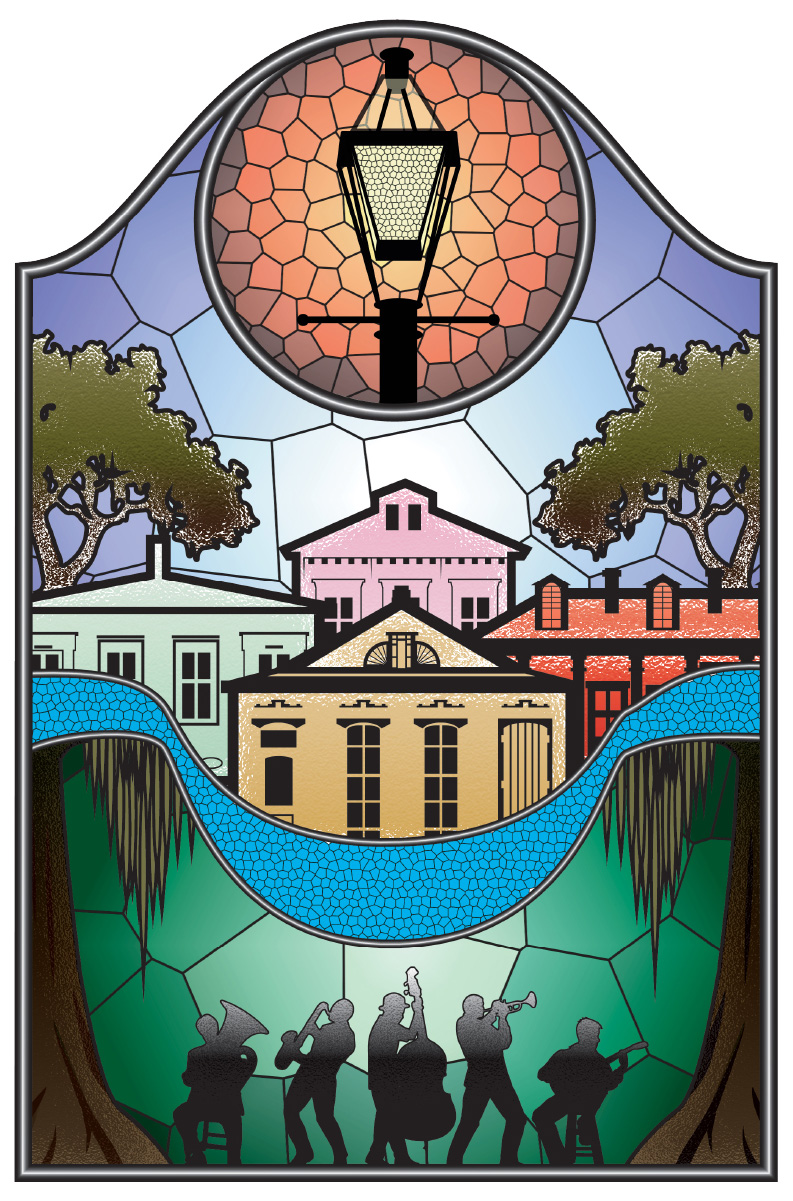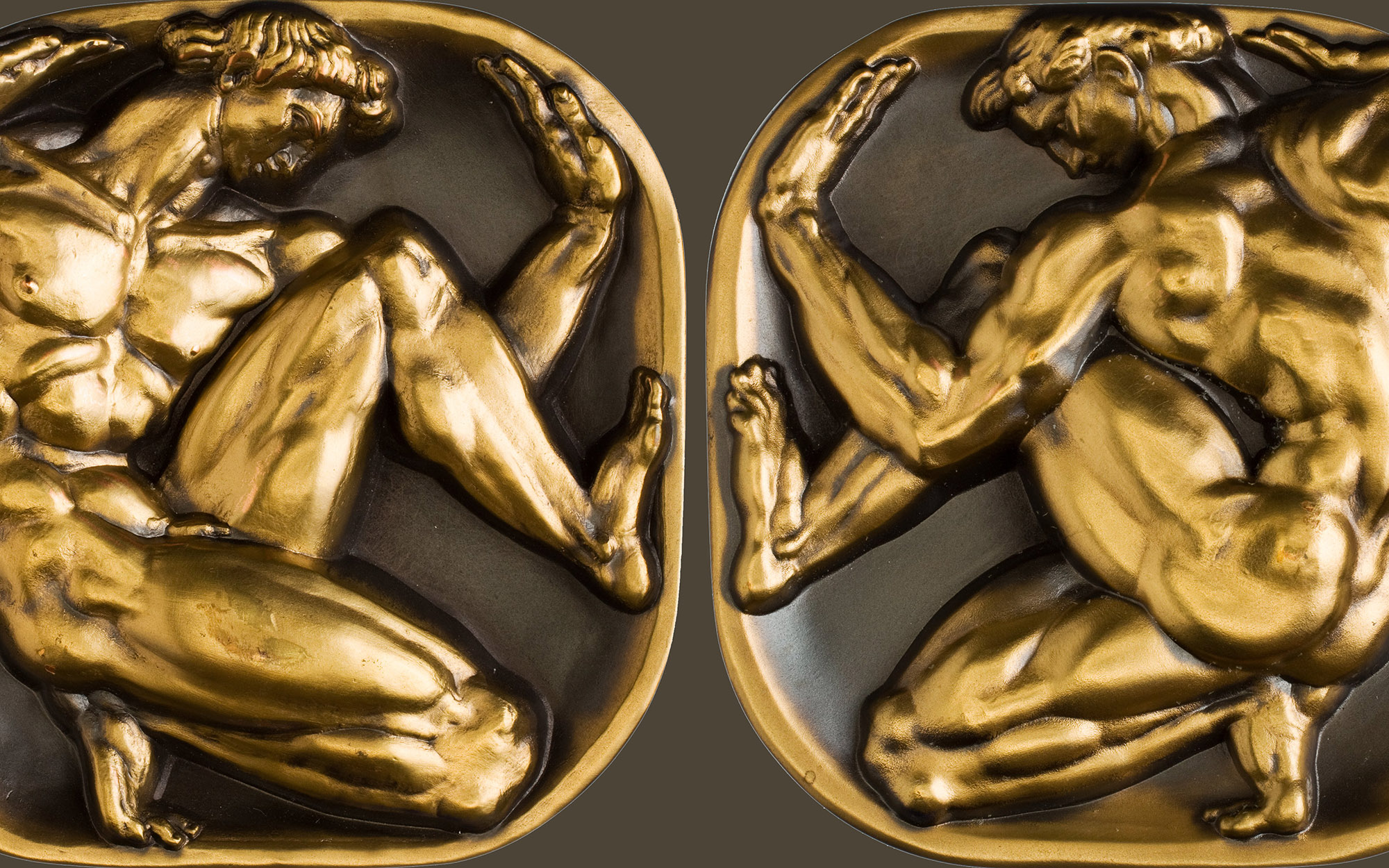A Variety of Control Mark Systems on Roman Republican Denarii
Another batch of control-marked denarii has recently been added to the Roman Republican Die Project (RRDP) database. The new RRC types included in this release are:
All these types are (more or less) part of the group of issues which Richard Schaefer has termed ODEC (One Die for Every Control-mark), i.e., issues which use only one die for any given control mark. ODEC is an especially important subset of issues because many actually have sequential numerical control marks, which allow us to test methods of die quantification, as has been discussed in previous blog posts. Not all issues use numerical control marks, but these issues can, nevertheless, still offer hints to die quantification and offer insight into the organization of the mint by showing the various control marks systems that were utilized. The control mark systems for each of the issues in the new RRDP release use letters accompanied by dots to the right, left, above, below, or some combination of these placements. Even though these systems appear related, when we look at the internal pattern of marks on any given issue we see instead that each system is unique, despite their initial similarity.
The earliest of these issues dates to 112 or 111 BCE. The moneyer’s name is known only as Ti. Q, perhaps Ti. Quinctius or Quinctilius. The obverse features a bust of Hercules, while the reverse shows a desultor riding left with a rat or mouse below (Fig. 1).
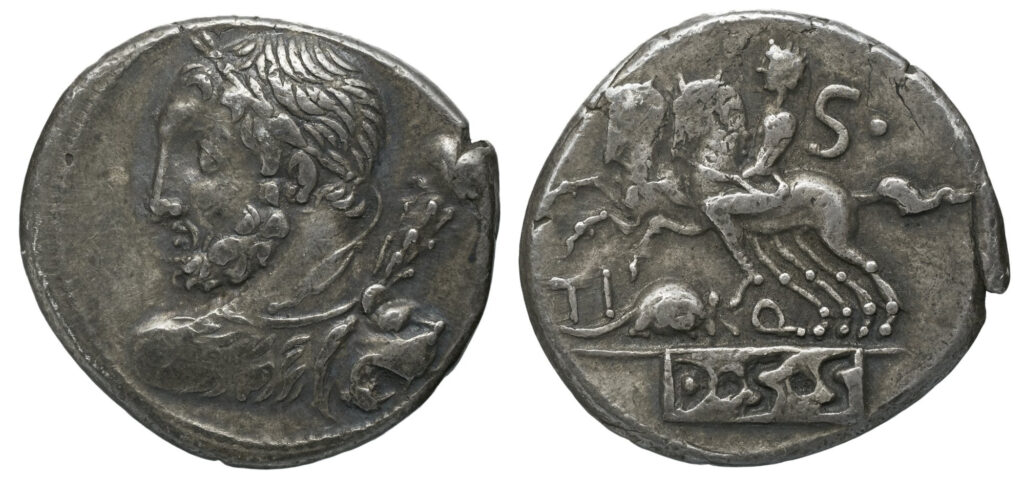
Crawford distinguished two subtypes based on the position of the rat: 297/1a (rat left) and 297/1b (rat right). Only 297/1b is part of the current release, but we hope to release 297/1a in the near future. The control marks of this type appear on the reverse behind the rider’s back. They are comprised of the 21 standard letters of the Latin alphabet, plus the less common Y and Z borrowed from the Greek alphabet. It seems that each letter was used four times: once each with a dot above, below, to the left, and to the right. It is likely that the die engravers cycled through the alphabet four times, moving the placement of the dot with each new cycle. This system suggests that this subtype was produced from ca. 92 reverse dies. RRDP includes 89 observed reverse dies, though five of these are duplicates of existing control marks. Duplicates are not uncommon in ODEC issues—probably most of these were accidentally produced by careless die cutters, though some may be unofficial imitations.
RRC 311/1e is again a subtype of a larger issue, produced by L. Cornelius Scipio Asiaticus in 106 BCE. The obverse has a head of Jupiter facing left, while the reverse shows Jupiter driving a right quadriga with a scepter and thunderbolt (Fig. 2).
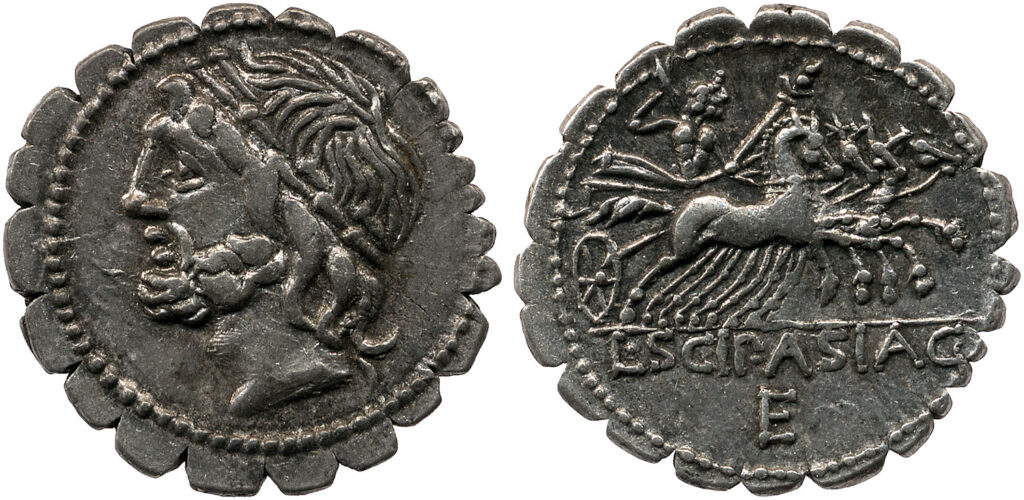
Crawford identified five subtypes of RRC 311/1 based on the placement of the control letters: 311/1a-b have control marks on the obverse, in left (311/1a) or right field (311/1b); 311/1c-e instead have the control mark on the reverse which can appear to the left of Jupiter’s scepter (311/1c), to the right of Jupiter’s scepter (311/1d), or below the quadriga (311/1e). There is currently a group of students from Sapienza Universitá in Rome who are helping to process these subtypes which will be part of the next RRDP data release. For 311/1e, the control marks are the standard letters of the Latin alphabet and seem to have been used three times each: once alone, once with a dot to the left, and once with a dot to the right, implying an estimated 63 original reverse dies.
RRC 322/1, produced by C. Fabius in 102 BCE, is split into two subtypes distinguished by control marks on the obverse (322/1a) or reverse (322/1b). What is especially interesting about this issue is that the two subtypes use different control mark systems. The obverse control marks of RRC 322/1a (Fig. 3) are the 24 letters of the Greek alphabet, either alone, with a dot above, with a dot below, with dots above and below, or with dots above, below, and to the right.
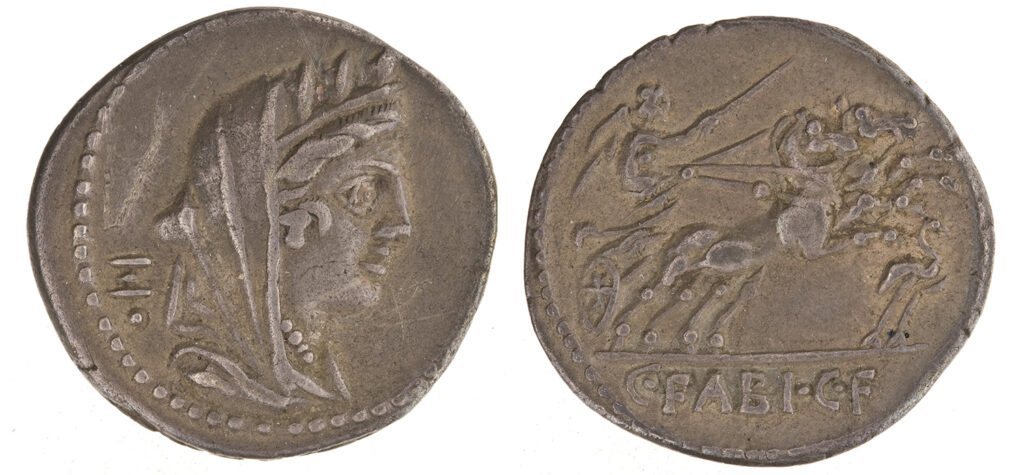
Based on observed dies, it seems that every letter was used once each alone, with dot above, and with dot below. Dies with two dots (above and below) may have used every letter of the alphabet, but currently only dies with Α, Ζ, Ξ, Ο, Π, Υ, Φ, Χ, Ψ, and ω are known. Letters with three dots (one above, one below, and one to the right), are only known on each of the letters from Α to Ξ. This may suggest these last two systems were actually one sequence, with a switch from three to two dots at Ξ, with A, Z, and Ξ having accidental duplicates. But this is not certain. Based on these two possible systems (either using every letter once with each system of dots or the two and three dot systems being one sequence), we can estimate an original number of reverse dies between 96 and 120.
The reverse control marks of RRC 322/1b, on the other hand, are only Latin letters, either alone, with a dot above, dot below, dots above and below, dot to the left, or dot to the right. Interestingly, letters with dots above do not strictly fit the ODEC pattern and are duplicated more than seems to be due to a simple accident. A, B, C, and D with dots above each appear on three dies, while most letters from E to O with dots above are regularly used on two dies. It is possible that some of these duplicates were meant to have dots above and below, since Schaefer has only found these beginning from the letter M. According to Crawford’s classification, 322/1b “usually” has control marks on the reverse, but Schaefer has found only three reverse dies without control marks, one of which is also used with 322/1a (Figs. 4-5) and another of which is probably an imitation. It is not uncommon for control marked issues to include one or two dies without control marks.
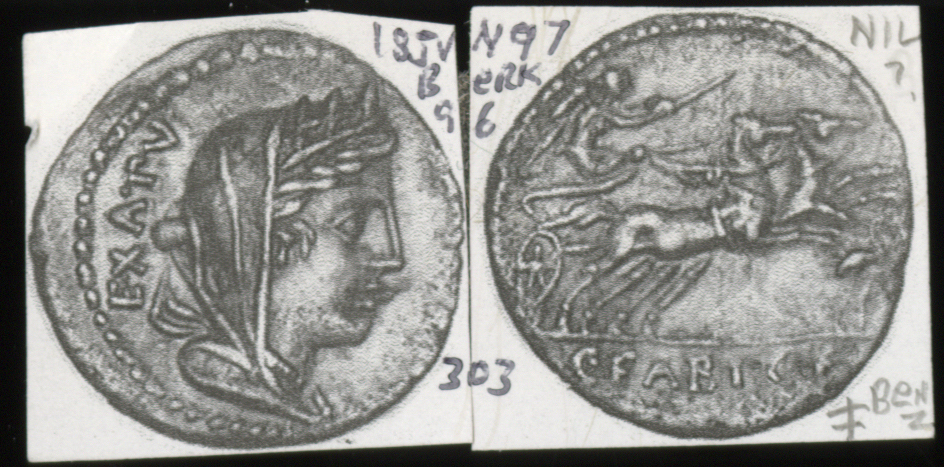
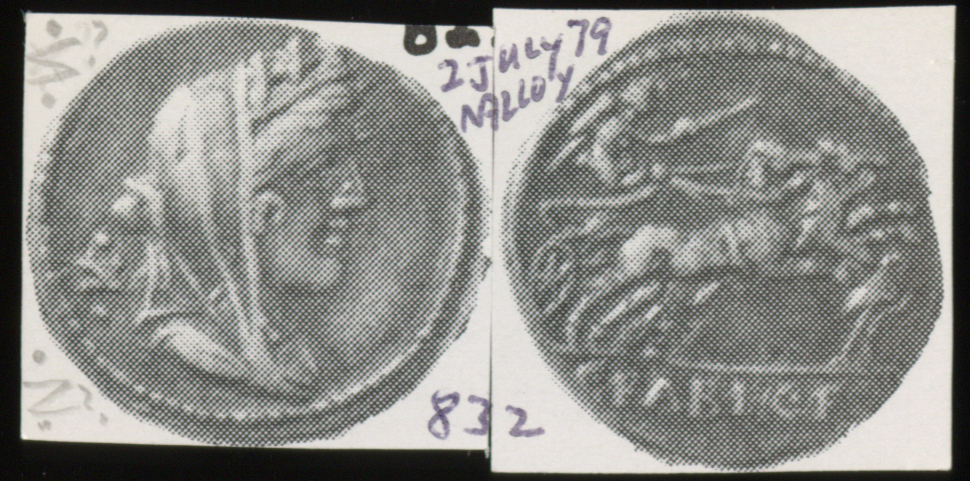
RRC 322/1b is also interesting because it is one of a group of types that include the special formula EX·A·PV (ex argento publico, “from public silver”). The exact purpose of adding this formula to certain issues is unclear, but the possibilities are explored further in an earlier blog post.
As with 322/1, the two subtypes of RRC 366/2, a joint issue of C. Annius and L. Fabius Hispanensis from 82-81 BCE, have control marks on different dies. 366/2a (Fig. 6) has obverse control marks which likely used each letter of the Latin alphabet, usually with a dot to the right, though the letters I and M seem to not include a dot, while the letters R (Fig. 6), T, and V have dots on both sides.
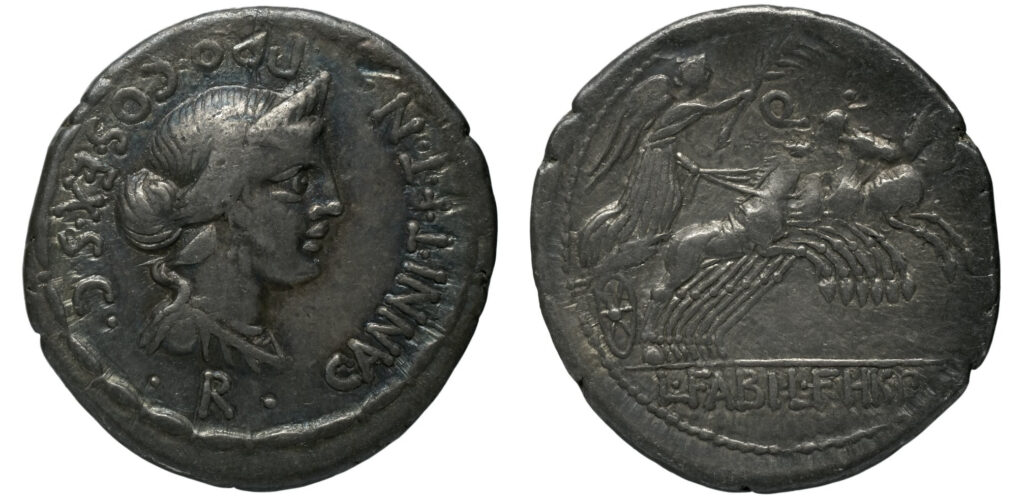
There are 21 observed dies, perfectly fitting the pattern that each letter was used once, although there are actually two observed dies with N and none with L. 366/2b uses reverse control marks, which are also Latin letters with a dot to the right, but in this case there are only five observed dies, with letters A, C, D, E, and F. Crawford also only observed dies for 366/2b with letters A through F (RRC table XXXI).
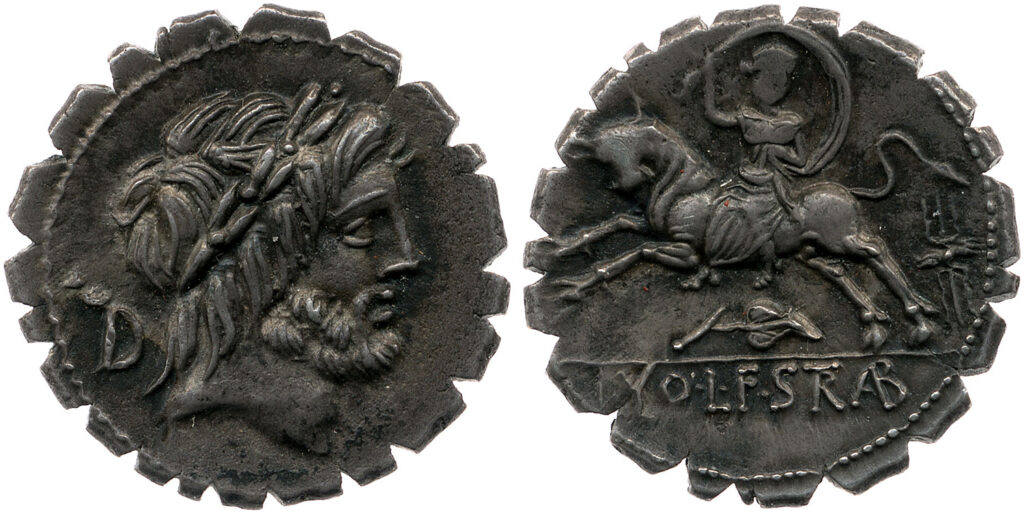
Finally, the denarius serratus struck by L. Volumnius Strabo in 81 BCE, RRC 377/1, uses obverse control marks (Fig. 7). The control marks are Latin letters alone. Crawford’s analysis of this issue showed letter A through L (RRC table XXXII), with A and F each having three dies while all other letters have only one die. RRDP also includes control marks only with letters A through L, but instead shows four dies with A, three with F, two with I, and two with L. For L, the second die seems to be used mostly (if not solely) with plated specimens so it may not have been an official die. The duplication of I may be accidental, but the production of four A dies and three F dies is unlikely to have been an accident. It is not clear, however, why only these two letters would have intentionally been duplicated while others were not. The team members of RRDP would like to acknowledge the contribution of and thank Francesco Paratico, a Masters student at Sapienza Università in Rome, who transcribed this issue.
As we can see, the Roman republican systems of control marks were diverse even when they appear to use the same patterns (i.e., letters with dots). The fact that no standard system of control marks was ever adopted by the republican mint has been used to suggest that these marks were never really intended for any purpose other than identifying individual dies. There are cases, however, where die marks do seem to be used to track and control production, as I have explored in a case study on RRC 335/3. What seems clear is that control marks systems were not intended to serve a single purpose but rather could be used to track production, keep track of the number of dies produced (as seems to be the case at least for 297/1b and 311/1e), or even sometimes used to communicate particular ideas or ideals, as for the issue of L. Papius where the control symbols allude to various trades. This variability suggests that individual moneyers had great freedom to create their own organizational systems in the production of their coinage.


